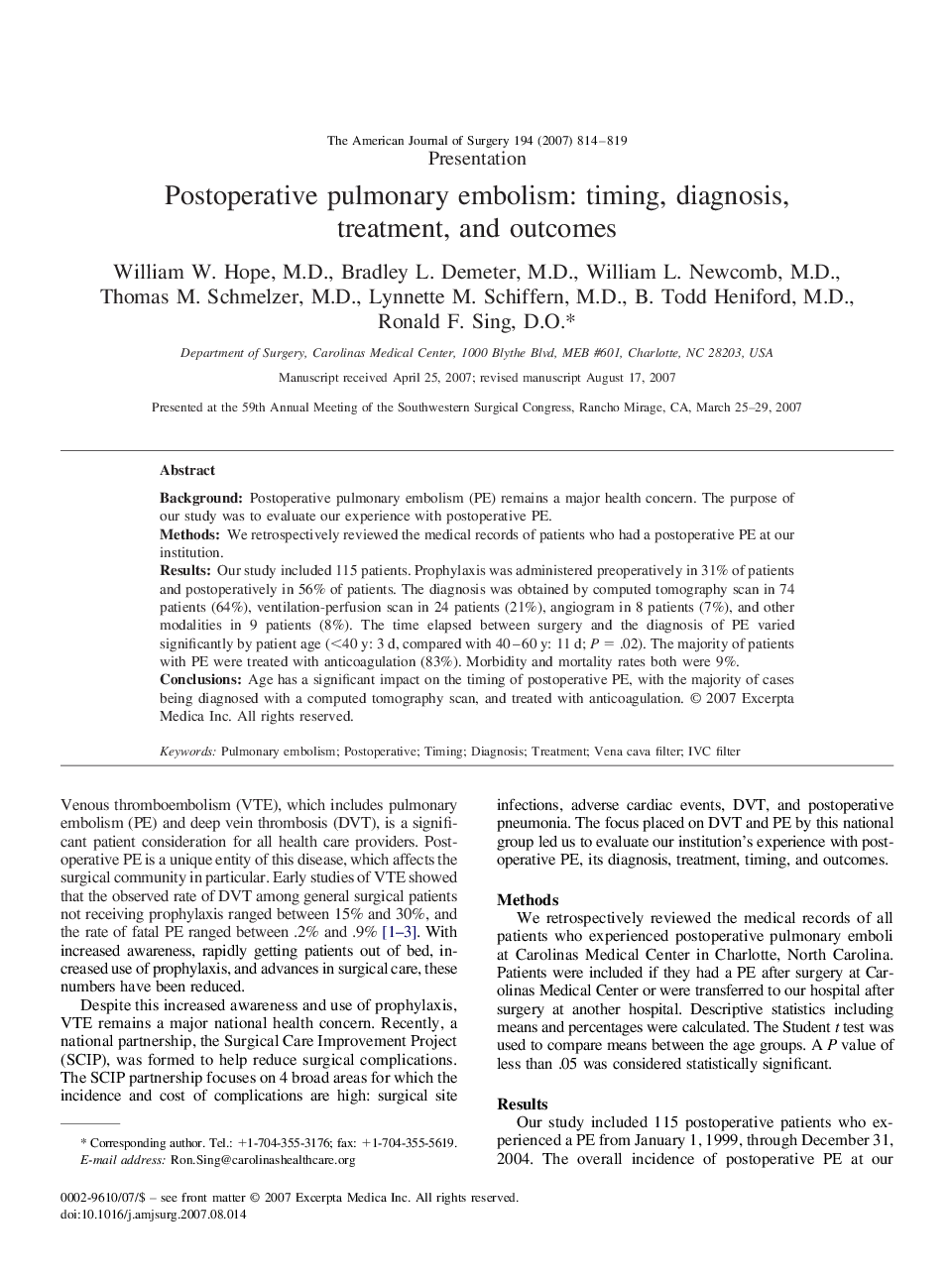| Article ID | Journal | Published Year | Pages | File Type |
|---|---|---|---|---|
| 4281487 | The American Journal of Surgery | 2007 | 6 Pages |
BackgroundPostoperative pulmonary embolism (PE) remains a major health concern. The purpose of our study was to evaluate our experience with postoperative PE.MethodsWe retrospectively reviewed the medical records of patients who had a postoperative PE at our institution.ResultsOur study included 115 patients. Prophylaxis was administered preoperatively in 31% of patients and postoperatively in 56% of patients. The diagnosis was obtained by computed tomography scan in 74 patients (64%), ventilation-perfusion scan in 24 patients (21%), angiogram in 8 patients (7%), and other modalities in 9 patients (8%). The time elapsed between surgery and the diagnosis of PE varied significantly by patient age (<40 y: 3 d, compared with 40–60 y: 11 d; P = .02). The majority of patients with PE were treated with anticoagulation (83%). Morbidity and mortality rates both were 9%.ConclusionsAge has a significant impact on the timing of postoperative PE, with the majority of cases being diagnosed with a computed tomography scan, and treated with anticoagulation.
